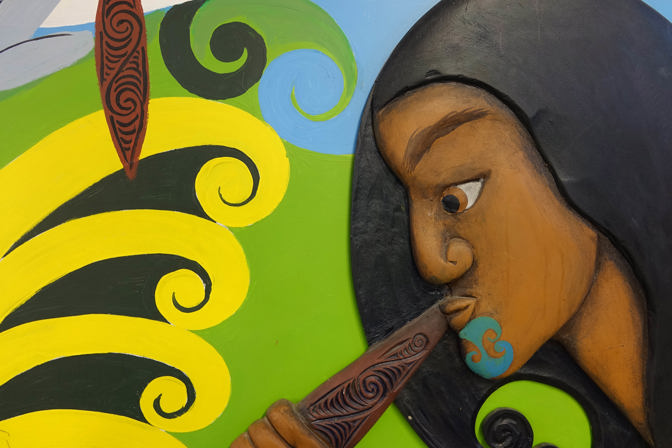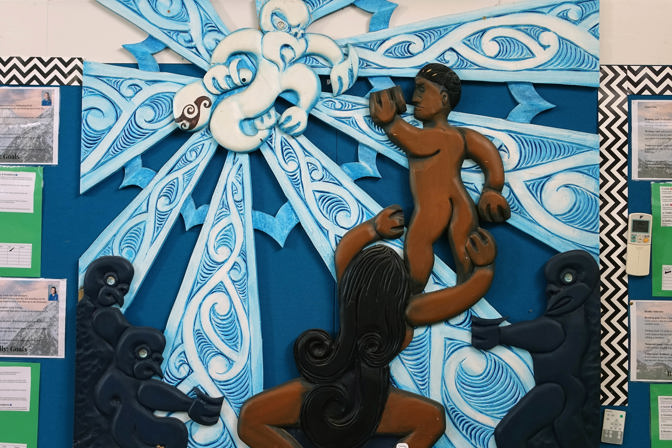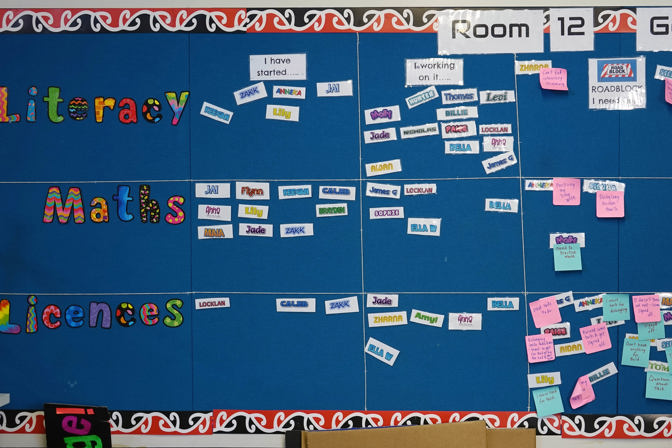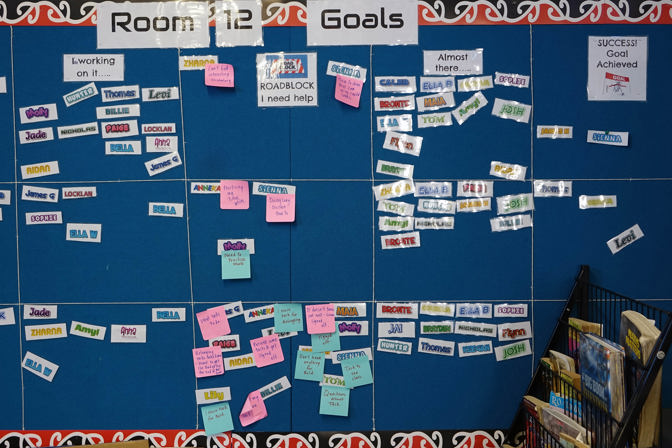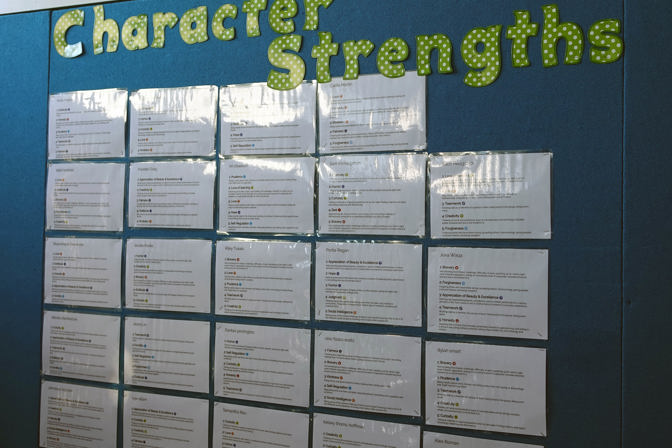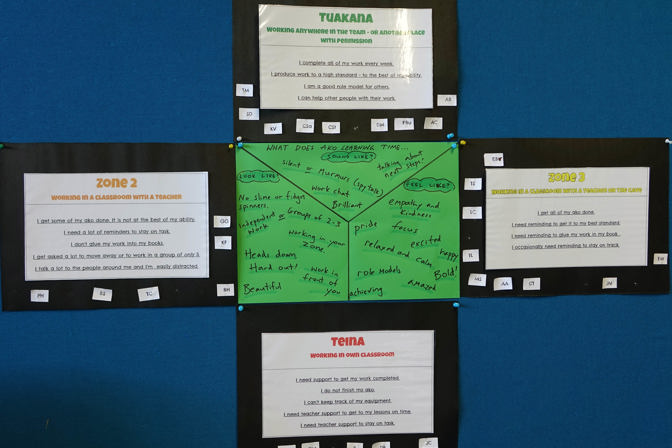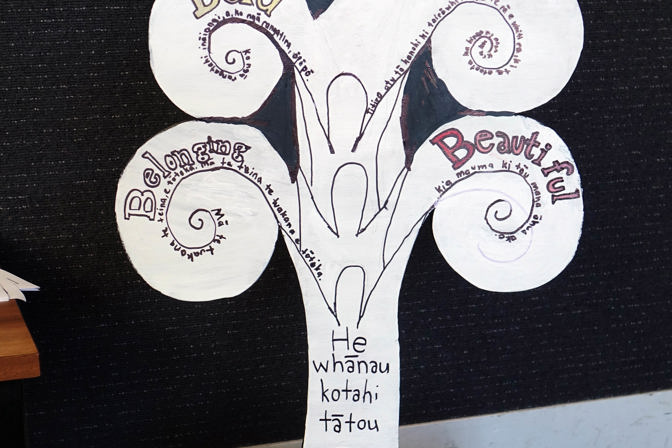Breens Intermediate – Developing a strong culture to support learning
Te Puna Waiora o Hereora (Breens Intermediate School) is located in Harewood, Christchurch. It is a progressive school, recognised for strong values and successful collaborative teaching approaches. Principal Nikki Clarke shares some key elements that support the school’s success and the shape of their future direction.
Building trust and collaboration
Breens introduced a collaborative teaching and learning model eight years ago. The focus when they began was to grow great teachers – to grow great learners. They believed that learning would be supported by building trust, relationships, cooperation, and collaboration. They also aimed to de-privatise the learning spaces.
Sharing ‘effective practice’ was a key goal. This began with building trust amongst staff. Breen’s staff achieved this by:
- using a critical friend model
- engaging in the Assess to Learn (AToL) project to learn how to give quality feedback to each other
- having ongoing conversations about learning
- supporting colleagues to innovate and take risks.
Teaching teams of three were formed based on complementary strengths. Tools to support this were:
- The Hermann Brain Model – to measure the preferences of staff and explore staff diversity. The use of this tool is ongoing.
- The VIA Character Strengths survey – to map out individual characteristics and strengths.
- A ‘Mutually Agreed Team Expectations’ (M.A.T.Es) framework. This continues to support working relationships. Agreements are constantly revised to ensure that they are still relevant. All staff contribute to this process.
Staff have explored how their characteristics, preferences, and strengths align and vary with their colleagues.
The next step is to align the VIA character strengths with the school values (Bold, Brave, Brilliant, Belonging, Beautiful). Staff will explore this further with students to investigate how it will support school wide wellbeing/hauora.
The power of values
The school’s Tree of Values was developed collaboratively with staff, students, and whānau. The values provide a framework for all programmes within the school. They are used to:
- develop professional learning goals for teachers as part of the appraisal process (along with the Tātaiako competencies);
- build trust by providing the basis for learning conversations;
- support collective responsibility of teachers for all students and their learning, while acknowledging individual accountability;
- build strong relationships;
- inform any approach to teaching and learning.
Breens has a supportive induction process for new teachers and student teachers. Teaching teams take care to support new and student teachers. This is underpinned by the school values and the MATEs agreements. Expectations are clear and a shared language of learning is used.
New learning for staff
Learning from other schools
Visiting other schools was instrumental in supporting Breens to develop their approach to collaborative teaching and learning. Staff reflected on their practice after seeing innovative possibilities in other schools. This supported a shift in thinking.
Connecting with other schools and sharing practice is still a focus. Breens have also hosted hundreds of national and international visitors at their school to share their learning.
Learning from students
Student voice provided powerful motivation for teachers to change and move to collaborative practice. Student surveys showed they wanted:
- more choice in their learning;
- diversity in when and how they learn (they didn’t want to be doing the same thing at the same time / they didn’t want to wait for others to finish activities);
- to design their own learning;
- to pursue their own interests and passions.
Ako learning
Ako learning allows students and teachers to co–design personalised learning pathways. Teachers can support and track individual learning needs and interests.
Ako underpins the Breens Licence programme, which emerged from listening to learner voice. ‘Ako time’ is a mix of targeted teaching, independent learning, and collaborative tasks. These continue to evolve with input from teachers and students.
Key elements of the programme include:
- personalised timetables and self management by students;
- purposeful learning activities that support learning and require deep thinking;
- targeted teaching opportunities for students;
- personalisation – each learner's Ako plan is unique and personal;
- goal setting and self regulation;
- the scope for students to follow passions and interests;
- co–design by teachers and students.
Students are carefully placed in hapu (kinship group, subtribe) when they enrol. They stay in their hapu for the two years they are at the school. This allows students to develop strong relationships with their teachers and each other. Placement is carefully considered with input from teachers, whānau, and students. A team’s homeroom teacher is the first point of contact for students within that team and there is dedicated time in the week for homeroom teachers to work alongside their students. Teaching teams have three teachers and two learning assistants supporting their students. They use a learning coach model, so there is always support for students during their independent learning time.
Authentic curriculum
Students are involved in school decisions and these often provide authentic learning contexts for students to solve real life problems and have input into the wider life of the school.
The Breens Licence Programme extends students, encourages agency, and provides a chance to earn badges. These supply evidence of achievement and are based around the values.
The virtual environment is a natural extension of the physical classroom environment. Technology is used to provide “flipped learning” opportunities and to support personalised learning and collaboration. The school has a technology centre that students are able to access at any time. Inquiry learning and opportunities for interest based learning are supported by this.
Quality peer feedback has been a focus and opportunities for high levels of student collaboration are provided. The tuakana–teina model is used, with time set aside for students to meet and discuss their next steps.
Learning progressions have been developed and students use these to monitor their own progress, share with teachers, tuakana and whānau, and plan for learning.
Ngāi tahutanga (Cultural intelligence)
Breens plans to weave their cultural narrative (gifted by Ngāi Tahu) through the design of the school rebuild. Mana Whenua facilitators have been instrumental in supporting this process. Breens has a legacy of 40 carvings which were co–created by a former art teacher and past students. These are displayed all around the school and are a precious taonga. They will feature strongly in the new school buildings. Nathan Riki, from the Breens leadership team has been preserving the history of the carvings by gathering the stories behind each one. The carvings will be linked digitally to these stories.
Culturally responsive practice is highly valued and underpins ways of working at the school. This has been developed and supported by:
- a cultural audit, conducted as part of the Hereora Cluster;
- a leadership position – focused on supporting culturally responsive practice with teachers and students;
- growing teacher capability in te reo Māori and tikanga Māori;
- leadership opportunities among Māori students;
- developing a whānau class that meets weekly;
- regular whānau hui;
- whānau representation co–opted onto the Board of Trustees;
- an across schools teacher role as part of Kāhui Ako (Community of learning).
As Breens Intermediate heads into a rebuild, teachers, students and whānau will have a range of skills and strategies to assist in the transition to new spaces. However, their learning is ongoing and their approach continually evolves from this. It is an exciting journey.
Additional resources
Education.govt.nz (Scroll down this page to find the videos below)
- Breens Intermediate – Productive partnerships, Treaty of Waitangi, Māori potential approach.
- Breens Intermediate – Ako, Māori potential approach.
- Breens Intermediate – Treaty of Waitangi, Māori potential approach, Productive partnerships.
- Breens Intermediate – Ako, Māori potential approach.
- Breens Intermediate – Identity, language and culture, Treaty of Waitangi.
Breens Intermediate – The impact of using Google Apps on literacy learning in the classroom
Breens Intermediate – Goal setting and reflection: Literacy learning supported by Google docs

